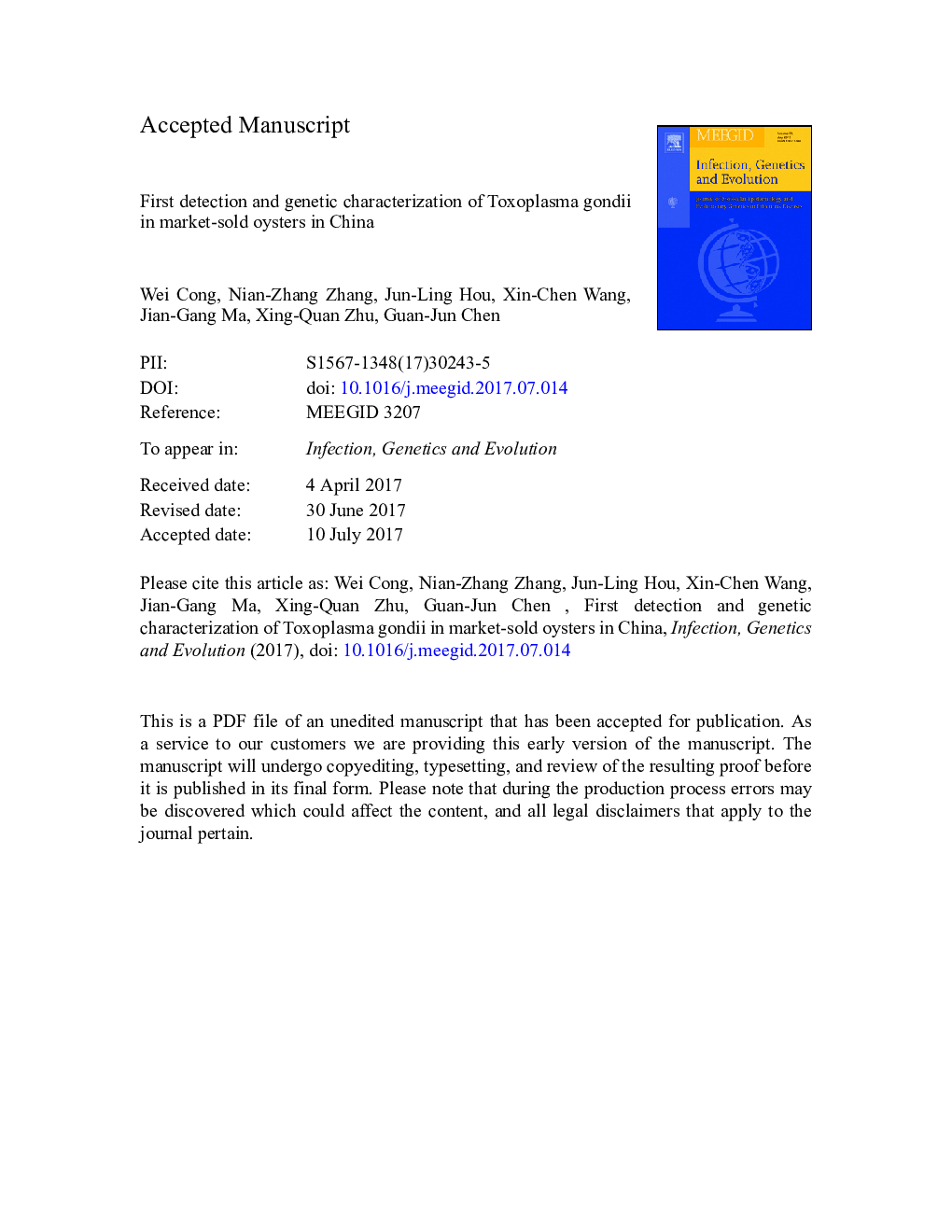| Article ID | Journal | Published Year | Pages | File Type |
|---|---|---|---|---|
| 5590573 | Infection, Genetics and Evolution | 2017 | 13 Pages |
Abstract
Toxoplasma gondii oocysts in the water might be filtered through the gills of shellfish in the process of feeding, and can be concentrated in the digestive glands. Consumers might become infected through ingestion of the shellfish unless they are discharged or inactivated by the shellfish. Thus, the purpose of this study was to evaluate the presence of T. gondii in market-sold oysters in China under natural conditions using a molecular approach. A total of 998 oysters were collected from markets in four cities (Weihai, Qingdao, Yantai and Rizhao) of Shandong province, eastern China. Of these, 26 samples (2.61%) were tested positive by nested PCR amplification of T. gondii B1 gene. Only one of the 26 positive samples was typed completely, and was identified as ToxoDB Genotype #9. This is first report of T. gondii in market-sold oysters in China, suggesting that oysters have the ability to filter and retain T. gondii oocysts in their tissues, which represents a risk to public health because oysters are frequently ingested in nature.
Keywords
Related Topics
Life Sciences
Agricultural and Biological Sciences
Ecology, Evolution, Behavior and Systematics
Authors
Wei Cong, Nian-Zhang Zhang, Jun-Ling Hou, Xin-Chen Wang, Jian-Gang Ma, Xing-Quan Zhu, Guan-Jun Chen,
